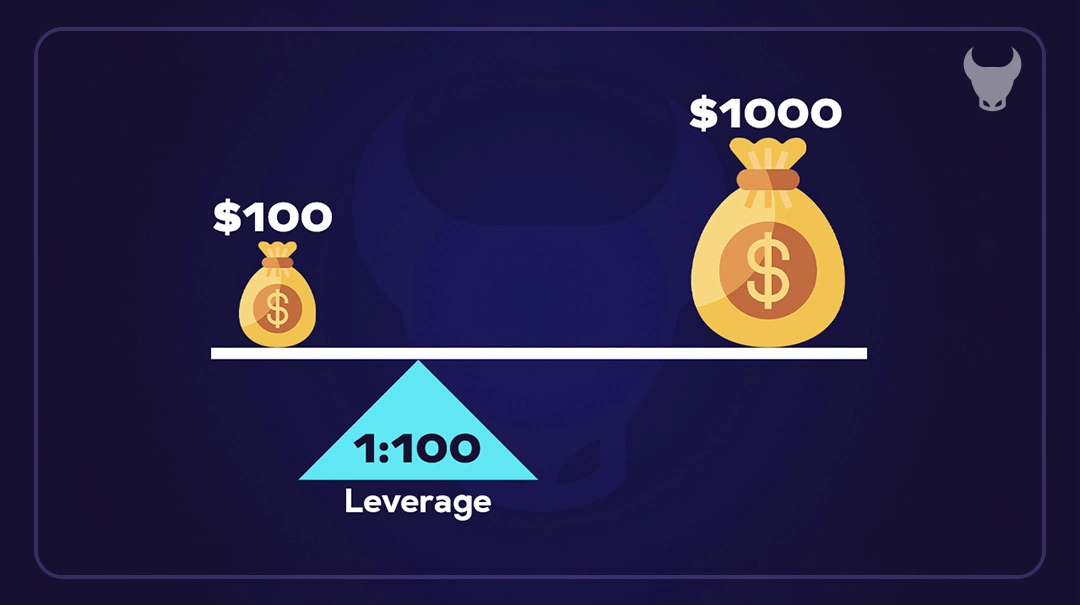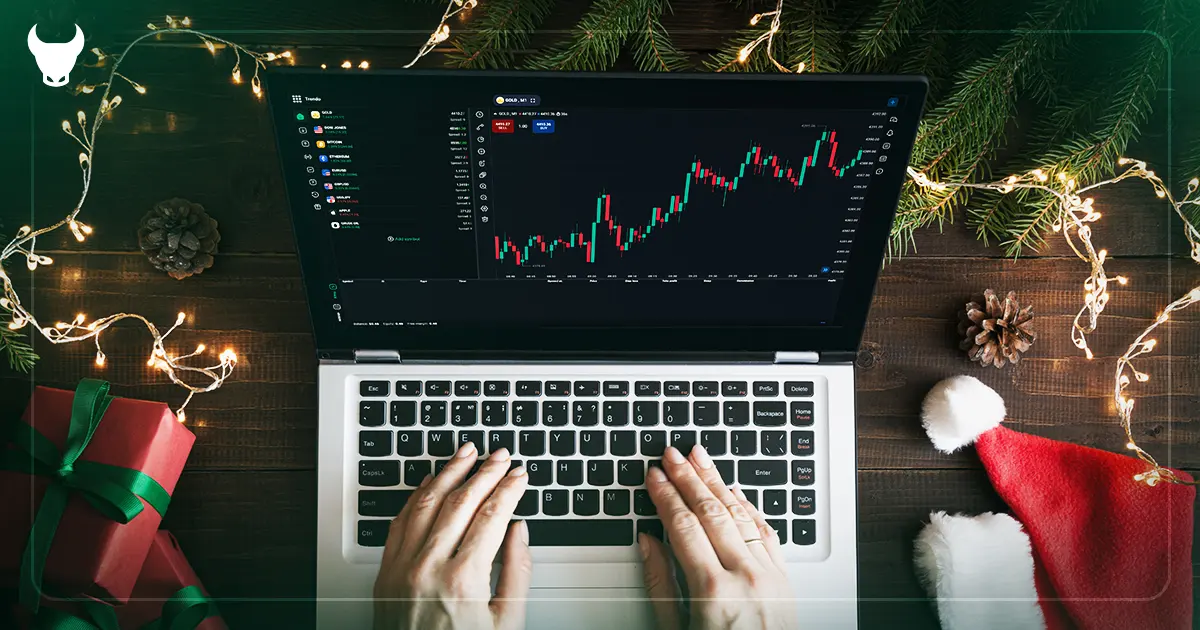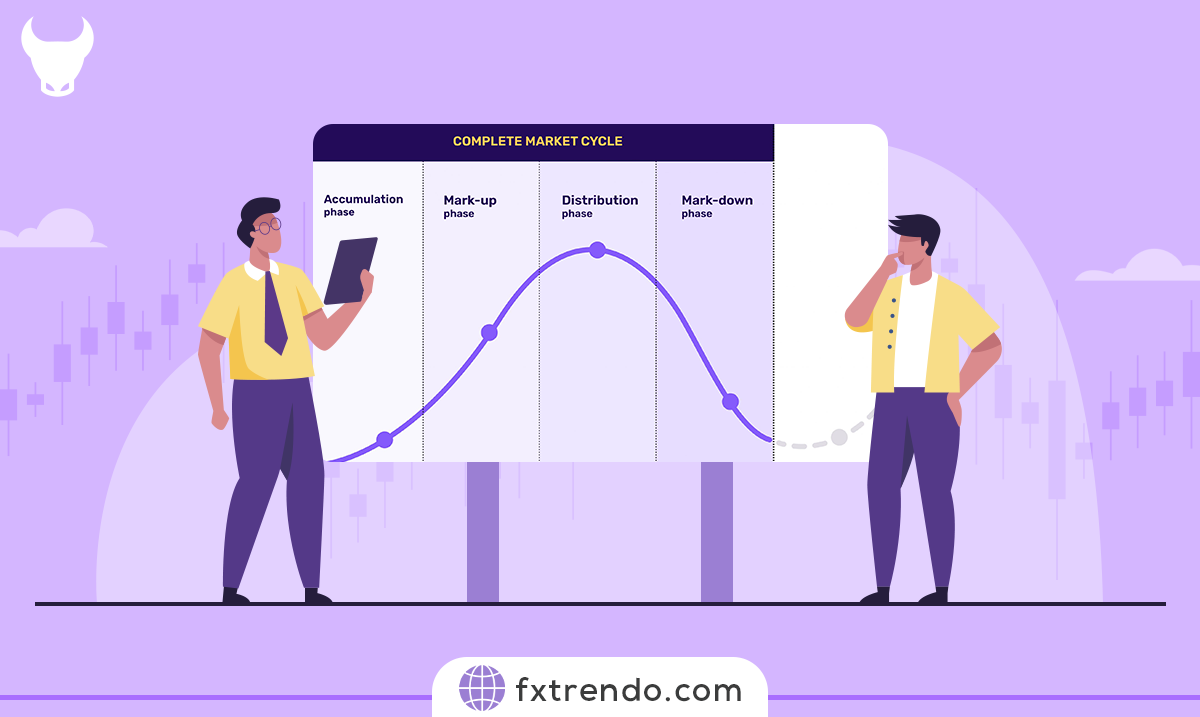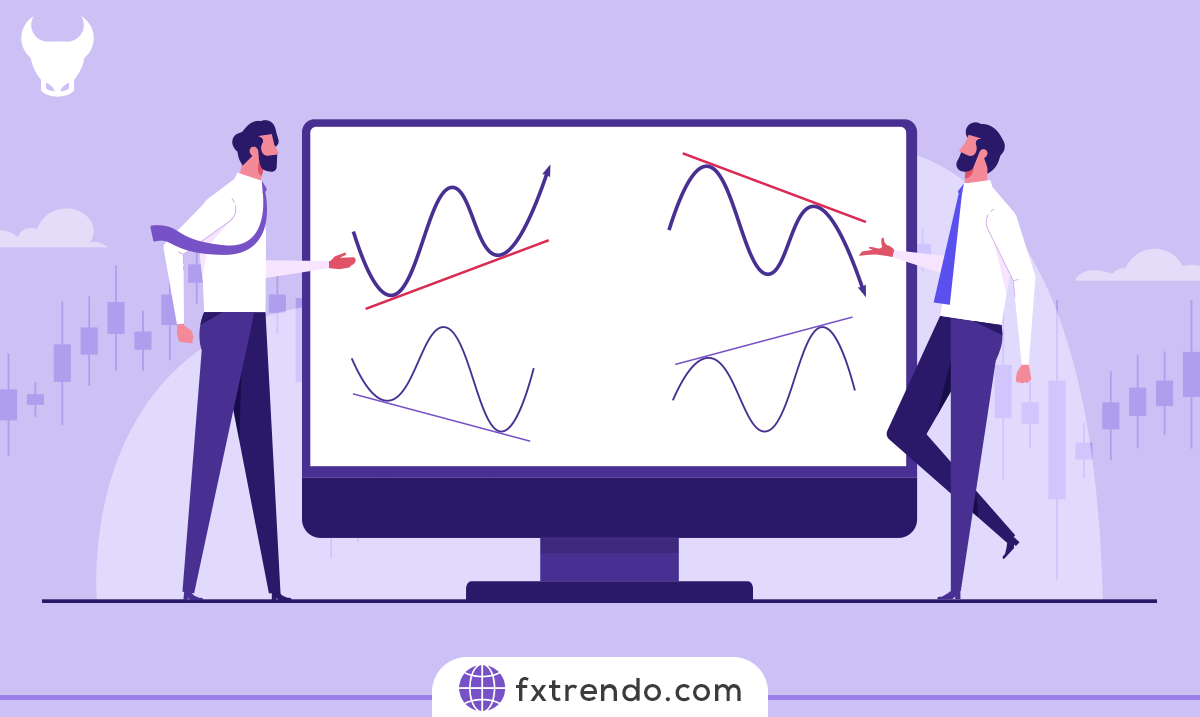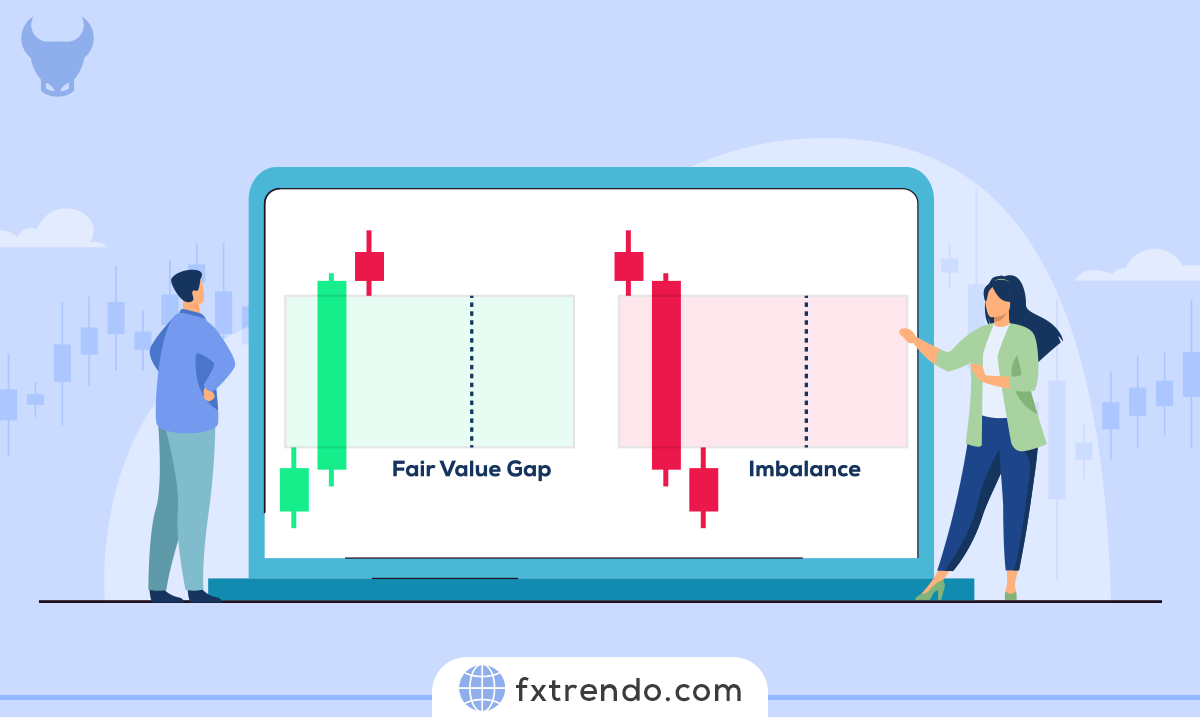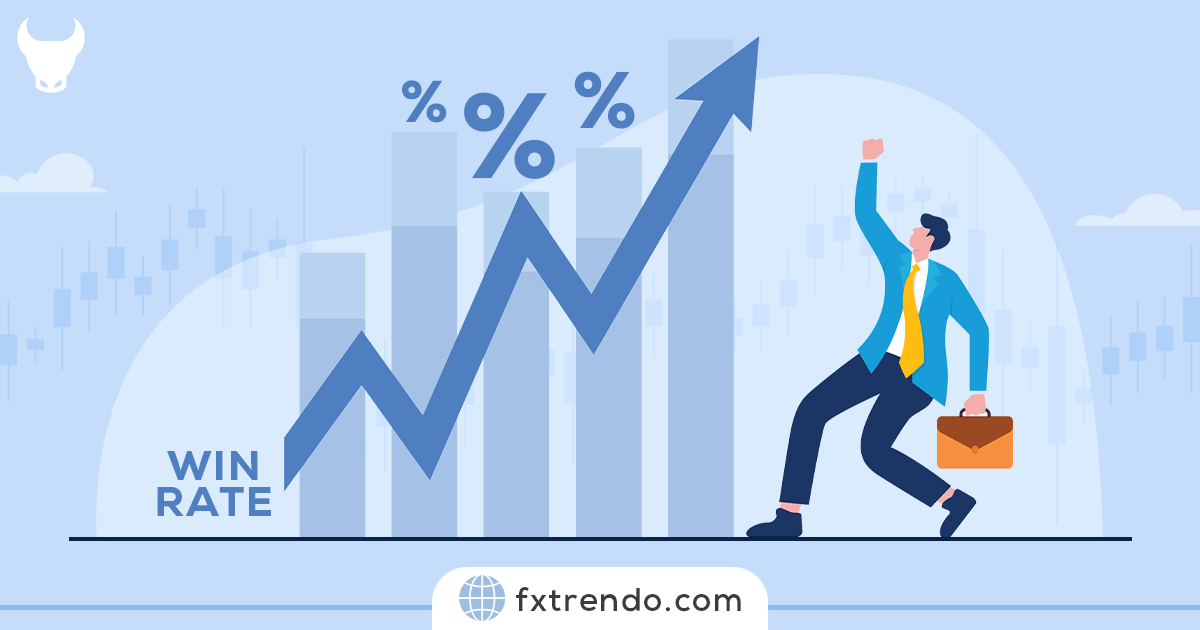Leverage allows traders to control larger positions with a smaller amount of capital, amplifying both potential gains and risks. But what is the best leverage in forex?
The answer isn’t one-size-fits-all; it depends on your trading strategy, risk tolerance, and experience level.
In this comprehensive guide, we’ll delve into the intricacies of forex leverage, exploring how it works, the benefits and risks, and how to choose the right leverage for your trading style.
Whether you’re a novice or a seasoned trader, understanding leverage is crucial to your success in the forex market.
Let’s dive in and learn everything about the best leverage in forex!
What is Leverage in Forex?
Leverage in forex trading is a powerful tool that allows traders to control a large position with a relatively small amount of capital. Essentially, it means borrowing money from a broker to increase the potential return on an investment. For example, with a leverage ratio of 10:1, a trader can control $10,000 worth of currency with just $1,000 of their own money.
Leverage works by amplifying both gains and losses. If the market moves in your favor, leverage can significantly boost your profits. However, if the market moves against you, it can also magnify your losses. This is why it’s often referred to as a double-edged sword.
Leverage is one of the main reasons why forex trading is so attractive to many traders. It allows them to participate in the market with a smaller initial investment, potentially leading to higher returns. However, it’s essential to approach leverage with caution and to fully understand the risks involved.
Read more:
What are The Differences between Leverage in Forex and Leverage in Crypto
Why is Leverage Important in Forex Trading?
Leverage is a crucial aspect of forex trading because it allows traders to control larger positions with a relatively small amount of capital. This means that even with a modest investment, traders can potentially achieve significant returns.
Here are some key reasons why leverage is important in forex trading:
1. Amplifies Potential Profits
Leverage enables traders to amplify their potential profits. For example, with a leverage ratio of 50:1, a trader can control $50,000 worth of currency with just $1,000 of their own money. If the market moves in their favor, the returns can be substantial compared to the initial investment.
2. Increases Market Accessibility
Leverage makes forex trading accessible to more people. Without leverage, many traders would need a large amount of capital to participate in the market. Leverage allows traders to enter the market with a smaller initial investment, making it possible for more individuals to trade forex.
3. Enhances Trading Opportunities
With leverage, traders can take advantage of more trading opportunities. They can open multiple positions simultaneously or trade larger volumes, which can lead to higher potential profits. This flexibility is particularly beneficial in a fast-moving market like forex.
4. Provides Flexibility in Trading Strategies
Leverage allows traders to implement various trading strategies that might not be feasible with a smaller capital base. For instance, traders can use leverage to hedge their positions, diversify their portfolios, or engage in short-term trading strategies that require larger positions.
5. Magnifies Both Gains and Losses
While leverage can significantly increase potential profits, it also magnifies potential losses. This is why it’s essential for traders to use leverage responsibly and employ effective risk management strategies. Setting stop-loss orders and not over-leveraging are crucial practices to mitigate the risks associated with high leverage.
Pros and Cons of Using Leverage
Leverage in Forex trading can be a double-edged sword, offering both significant advantages and potential pitfalls. Let’s explore both sides to give you a balanced perspective.
Pros of Using Leverage
1. Amplified Profits:
Leverage allows traders to control larger positions with a smaller amount of capital. This means that even small market movements can result in significant gains. For example, with a leverage ratio of 50:1, a trader can control $50,000 worth of currency with just $1,000 of their own money.
2. Increased Market Access:
Leverage makes forex trading accessible to more people. Without leverage, many traders would need a large amount of capital to participate in the market. Leverage allows traders to enter the market with a smaller initial investment, making it possible for more individuals to trade forex.
3. Enhanced Trading Opportunities:
With leverage, traders can take advantage of more trading opportunities. They can open multiple positions simultaneously or trade larger volumes, which can lead to higher potential profits. This flexibility is particularly beneficial in a fast-moving market like forex.
4. Flexibility in Trading Strategies:
Leverage allows traders to implement various trading strategies that might not be feasible with a smaller capital base. For instance, traders can use leverage to hedge their positions, diversify their portfolios, or engage in short-term trading strategies that require larger positions.
Cons of Using Leverage
1. Magnified Losses:
Just as leverage can amplify profits, it can also magnify losses. If the market moves against your position, the losses can be substantial. This is why it’s crucial to use leverage responsibly and have a solid risk management plan in place.
2. Increased Risk:
Leverage inherently increases the risk of trading. The higher the leverage ratio, the greater the potential for both profit and loss. Traders need to be aware of this risk and be prepared for the possibility of significant losses.
3. Emotional Stress:
Trading with high leverage can be emotionally stressful. The potential for large gains and losses can lead to heightened emotions, which can impact decision-making and lead to impulsive trading actions.
4. Margin Calls:
If the market moves significantly against a leveraged position, traders may face margin calls from their brokers. This means they need to deposit additional funds to maintain their positions, which can be financially straining.
How to Use Leverage in Forex?
Using leverage in forex trading can be a powerful way to enhance your trading potential, but it requires careful management to avoid significant losses. Here’s a step-by-step guide on how to use leverage effectively:
1. Understand Leverage Ratios
Leverage is expressed as a ratio, such as 50:1 or 100:1. This means that for every dollar you have in your trading account, you can control $50 or $100 in the market. Higher leverage ratios allow you to control larger positions, but they also increase the risk of significant losses.
2. Choose the Right Leverage
Selecting the appropriate leverage ratio depends on your trading experience, risk tolerance, and strategy. Beginners are often advised to start with lower leverage, such as 10:1 or 20:1, to minimize risk. As you gain more experience and confidence, you can consider higher leverage ratios.
3. Use Risk Management Tools
Effective risk management is crucial when using leverage. Always set stop-loss orders to limit potential losses. A stop-loss order automatically closes your position if the market moves against you by a certain amount, helping to protect your capital.
4. Monitor Your Margin
Margin is the amount of money required to open and maintain a leveraged position. Keep an eye on your margin level to avoid margin calls, which occur when your account balance falls below the required margin. If you receive a margin call, you’ll need to deposit additional funds to keep your positions open.
5. Start Small
When you’re new to using leverage, start with small positions. This allows you to get a feel for how leverage affects your trades without risking too much capital. As you become more comfortable, you can gradually increase your position sizes.
6. Stay Informed
Keep up with market news and trends. Leverage can amplify both gains and losses, so it’s important to stay informed about factors that could impact the market. This helps you make more informed trading decisions.
7. Practice with a Demo Account
Before using leverage in a live trading account, practice with a demo account. This allows you to test your strategies and understand how leverage works without risking real money. Many brokers offer demo accounts that simulate real market conditions.
8. Be Prepared for Volatility
Forex markets can be highly volatile. Leverage can magnify the effects of market movements, so be prepared for rapid changes in your account balance. Always trade with a clear plan and stick to your risk management rules.
Briefly, using leverage in forex trading can enhance your trading potential, but it requires careful management and a solid understanding of the risks involved. By starting small, using risk management tools, and staying informed, you can use leverage effectively to achieve your trading goals.
Different Types of Leverage in Forex
In forex trading, leverage comes in various forms, each offering different levels of control and risk. Understanding these types can help you choose the best leverage for your trading strategy. Here are the different types of leverage in forex:
Low Leverage (1:10, 1:20)
Low leverage ratios, such as 1:10 or 1:20, are ideal for beginners or conservative traders. With low leverage, you can control a larger position with a smaller amount of capital, but the potential gains and losses are also smaller.
This type of leverage provides more stability and less risk, making it easier to manage trades without the fear of significant losses. It’s a great way to learn the ropes of forex trading while keeping risks manageable.
Medium Leverage (1:50, 1:100)
Medium leverage, ranging from 1:50 to 1:100, strikes a balance between risk and reward. It allows traders to control larger positions and potentially achieve higher profits compared to low leverage. However, it also comes with increased risk.
This type of leverage is suitable for traders with some experience who are comfortable with taking on more risk in exchange for the possibility of higher returns. It’s important to use risk management strategies, such as stop-loss orders, to protect your capital.
High Leverage (1:200, 1:500)
High leverage ratios, like 1:200 or 1:500, are typically used by more experienced traders who have a higher risk tolerance. With high leverage, you can control very large positions with a relatively small amount of capital.
This can lead to substantial profits if the market moves in your favor. However, it also means that losses can be equally significant if the market moves against you. High leverage requires careful monitoring and a solid understanding of market dynamics to avoid large losses.
Ultra-High Leverage (1:1000 and Above)
Ultra-high leverage, such as 1:1000 or higher, is available with some brokers and is generally reserved for very experienced traders. This level of leverage allows you to control extremely large positions with a minimal amount of capital.
While the potential for profit is enormous, the risk is also extremely high. Even small market movements can result in significant gains or losses.
Ultra-high leverage should be used with extreme caution and only by those who fully understand the risks involved.
Factors to Consider When Choosing Leverage
Choosing the right leverage in forex trading is crucial for balancing potential profits with manageable risk. Here are some key factors to consider:
1. Risk Tolerance
Your risk tolerance is the level of risk you are comfortable taking. If you prefer a conservative approach, lower leverage ratios like 1:10 or 1:20 might be more suitable.
Higher leverage ratios, such as 1:100 or 1:200, can offer greater profit potential but also come with increased risk.
Assess your risk tolerance honestly to choose the leverage that aligns with your comfort level.
2. Trading Experience
Your level of trading experience plays a significant role in determining the appropriate leverage. Beginners should start with lower leverage to minimize risk while learning the market dynamics.
As you gain more experience and confidence, you can gradually increase your leverage.
3. Trading Strategy
Different trading strategies require different leverage levels. For example, long-term strategies might benefit from lower leverage to reduce the impact of market fluctuations over time.
Short-term strategies, like scalping, might use higher leverage to capitalize on small price movements. Align your leverage choice with your trading strategy to optimize your results.
4. Market Volatility
Consider the volatility of the currency pairs you are trading. Highly volatile markets can lead to significant price swings, which can be amplified by high leverage.
In such cases, using lower leverage can help manage risk more effectively. For less volatile markets, higher leverage might be more appropriate.
5. Account Size
The size of your trading account also influences your leverage choice. Larger accounts can absorb more significant losses, allowing for higher leverage.
Smaller accounts, on the other hand, should use lower leverage to avoid the risk of margin calls and account depletion.
6. Regulatory Requirements
Different countries have varying regulations regarding leverage in forex trading. Ensure you are aware of the regulatory limits in your region and choose leverage that complies with these rules. Some brokers may also have their own restrictions on leverage ratios.
7. Financial Goals
Your financial goals and investment horizon should guide your leverage decision. If you aim for steady, long-term growth, lower leverage might be more suitable.
For those seeking quick, substantial gains, higher leverage could be considered, but with a clear understanding of the associated risks.
Choosing the right leverage involves a careful assessment of your risk tolerance, trading experience, strategy, market conditions, account size, regulatory environment, and financial goals.
How to Determine the Best Leverage for You?
Choosing the best leverage for your forex trading involves considering several key factors to ensure it aligns with your trading goals and risk tolerance. Here’s a step-by-step guide to help you determine the most suitable leverage for you:
1. Assess Your Risk Tolerance
Your risk tolerance is the amount of risk you are willing to take on. If you prefer a conservative approach, lower leverage ratios like 1:10 or 1:20 might be more appropriate. Higher leverage ratios, such as 1:100 or 1:200, can offer greater profit potential but also come with increased risk. Be honest about your comfort level with potential losses.
2. Evaluate Your Trading Experience
Your level of experience in forex trading is crucial. Beginners should start with lower leverage to minimize risk while learning the market dynamics. As you gain more experience and confidence, you can gradually increase your leverage. Experienced traders might feel comfortable using higher leverage ratios to maximize their profit potential.
3. Define Your Trading Strategy
Different trading strategies require different leverage levels. For instance, long-term strategies might benefit from lower leverage to reduce the impact of market fluctuations over time. Short-term strategies, like scalping, might use higher leverage to capitalize on small price movements. Align your leverage choice with your trading strategy to optimize your results.
4. Consider Market Conditions
Market volatility can significantly impact your trading. Highly volatile markets can lead to significant price swings, which can be amplified by high leverage. In such cases, using lower leverage can help manage risk more effectively. For less volatile markets, higher leverage might be more appropriate.
5. Analyze Your Account Size
The size of your trading account also influences your leverage choice. Larger accounts can absorb more significant losses, allowing for higher leverage. Smaller accounts, on the other hand, should use lower leverage to avoid the risk of margin calls and account depletion.
6. Understand Regulatory Requirements
Different countries have varying regulations regarding leverage in forex trading. Ensure you are aware of the regulatory limits in your region and choose leverage that complies with these rules. Some brokers may also have their own restrictions on leverage ratios.
7. Set Clear Financial Goals
Your financial goals and investment horizon should guide your leverage decision. If you aim for steady, long-term growth, lower leverage might be more suitable. For those seeking quick, substantial gains, higher leverage could be considered, but with a clear understanding of the associated risks.
8. Practice with a Demo Account
Before committing real money, practice with a demo account to test different leverage ratios. This allows you to understand how leverage affects your trades without risking your capital. Many brokers offer demo accounts that simulate real market conditions.
Best Leverage for Different Types of Traders
Choosing the right leverage in Forex trading depends on your experience level, risk tolerance, and trading strategy. Let’s explore the best leverage for different types of traders.
Best Leverage for Beginners
For beginners, it’s crucial to start with low leverage to minimize risk while learning the ropes of forex trading. A leverage ratio of 1:10 or 1:20 is often recommended. This conservative approach allows new traders to control larger positions without exposing their capital to significant risk. By using lower leverage, beginners can focus on developing their trading skills and understanding market dynamics without the pressure of large potential losses. It’s a safe way to gain experience and build confidence in trading.
Best Leverage for Intermediate Traders
Intermediate traders, who have some experience and a better understanding of the market, might opt for medium leverage ratios such as 1:50 or 1:100. This level of leverage strikes a balance between risk and reward, allowing traders to control larger positions and potentially achieve higher profits. However, it’s important to continue using risk management strategies, such as setting stop-loss orders, to protect your capital. Intermediate traders should also stay informed about market conditions and adjust their leverage accordingly.
Best Leverage for Advanced Traders
Advanced traders, with extensive experience and a high risk tolerance, might choose high leverage ratios like 1:200 or 1:500. These traders have a solid understanding of market dynamics and effective risk management strategies. High leverage can amplify profits significantly, but it also increases the risk of substantial losses. Advanced traders should monitor their trades closely and be prepared for market volatility. They often use high leverage to capitalize on short-term trading opportunities and maximize their profit potential.
The best leverage for you depends on your trading experience, risk tolerance, and strategy. Beginners should start with low leverage, intermediate traders can use medium leverage, and advanced traders might opt for high leverage. Always use leverage responsibly and employ effective risk management to protect your capital.
How to Manage Risk When Using Leverage?
Managing risk is crucial when using leverage in forex trading, as it can amplify both gains and losses. Here are some key strategies to help you manage risk effectively:
1. Use Proper Position Sizing
Determine the appropriate position size for each trade based on your risk tolerance and account balance. Avoid overleveraging your trades, as this can quickly lead to substantial losses if the market moves against you. A good rule of thumb is to risk only a small percentage of your trading capital on any single trade.
2. Set Stop-Loss Orders
Always use stop-loss orders to limit potential losses. A stop-loss order automatically closes your position if the market moves against you by a certain amount, helping to protect your capital. By setting a stop-loss order, you can define the maximum amount you are willing to risk on a trade.
3. Diversify Your Portfolio
Avoid concentrating your trades on a single currency pair or market. Diversifying your portfolio can help spread the risk and reduce the impact of any single trade on your overall account balance. This way, if one trade goes poorly, it won’t significantly affect your entire portfolio.
4. Monitor Your Trades Regularly
Keep a close eye on your open positions and the market conditions. Stay updated with economic news, central bank announcements, and other factors that may impact currency exchange rates. Adjust your stop-loss orders and take-profit levels accordingly to manage risk effectively.
5. Use Risk Management Tools
Many trading platforms offer risk management tools such as guaranteed stop-loss orders or trailing stop orders. These tools can help you manage risk by automatically adjusting your stop-loss levels as the market moves in your favor, locking in profits while limiting potential losses.
6. Stay Informed and Educated
Continuously educate yourself about forex trading and market conditions. Understanding the factors that influence currency movements can help you make more informed trading decisions. Regularly reading market analysis and staying updated with financial news can provide valuable insights.
7. Keep Emotions in

